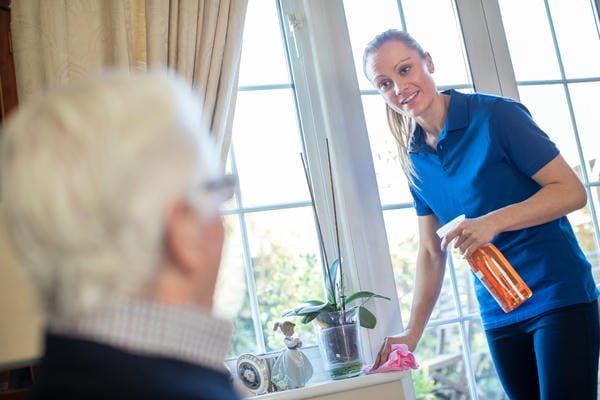Introduction: Why Ontario is a Top Destination for Caregivers
Canada has been welcoming caregivers for decades, recognizing their essential role in supporting families, seniors, and people with disabilities. The Ontario caregiver immigration program remains one of the most reliable pathways to permanent residence for foreign caregivers.
Ontario, home to nearly 40% of Canada’s population, offers abundant job opportunities in caregiving due to a growing elderly population and increased demand for home support services. The province also provides higher wages and strong worker protections, making it an attractive choice for foreign caregivers.
However, securing permanent residency (PR) in Canada as a caregiver requires meeting strict eligibility criteria—especially the work experience requirement. Without the right amount of work experience, even a qualified applicant cannot apply for PR. This guide will walk you through the latest 2025 work experience requirement updates, how to qualify, and practical steps to help you achieve PR.
Understanding the Ontario Caregiver Immigration Program
What Are the HCCP and HSW Pilot Programs?
The Home Child Care Provider (HCCP) Pilot and Home Support Worker (HSW) Pilot are five-year programs designed to provide caregivers with a direct pathway to PR while working in Canada.
✔ HCCP (NOC 44100) – For caregivers who take care of children under 18 in a private home setting.
✔ HSW (NOC 44101) – For caregivers who provide assistance to seniors or people with disabilities in their homes.
Both programs allow caregivers to apply for an occupation-restricted work permit while gaining the required work experience in Canada. After completing at least 12 months of authorized full-time work, applicants can transition to permanent residency.
Latest Work Experience Requirement (2025 Updates)
To qualify for PR under the Ontario caregiver pathway, you must meet the updated work experience requirement set by Immigration, Refugees and Citizenship Canada (IRCC).
1. Minimum Work Experience Requirement
As of February 2025, applicants must have:
✅ At least 12 months (1 year) of full-time work experience
✅ Completed within the last 36 months (3 years) before applying
✅ Work must be in Canada under one of the following National Occupational Classification (NOC) codes:
- Home Child Care Provider (NOC 44100)
- Home Support Worker (NOC 44101)
🔗 Official Source: Government of Canada – Home Child Care Provider and Home Support Worker Pilots
2. Understanding “Authorized” Work Experience
Your experience must have been gained legally under a valid work permit. Unauthorized work—such as working without a permit, outside work permit conditions, or in a different occupation—does not count.
🔗 Official Source: IRCC – Work Permit Rules for Caregivers
3. Case Study: A Caregiver’s Journey to PR
💡 Example: Maria, a caregiver from the Philippines, arrived in Canada in 2023 under the HCCP Pilot. She worked full-time (30+ hours/week) with a family in Toronto, providing childcare for two young children.
After 12 months of work, she applied for PR but faced delays because she didn’t submit all her pay stubs and tax records. After correcting her application, she received PR approval in 2025. Her experience highlights the importance of keeping employment records to meet the IRCC’s strict verification process.
How to Gain the Required Work Experience
1. Finding a Caregiver Job in Ontario
If you are outside Canada, securing a valid job offer is the first step. The best ways to find caregiver jobs include:
✔ Government Job Portals – Check the Job Bank for LMIA-approved caregiver jobs.
✔ Caregiver Agencies – Agencies like ComforHome.ca can connect you with verified employers.
✔ Referrals and Networking – Many caregivers find jobs through word-of-mouth recommendations.
2. Applying for a Work Permit
Once you have a job offer, you must apply for a work permit under the caregiver pilot program. This work permit allows you to work legally in Canada while gaining the required experience.
🔗 Source: IRCC – Caregiver Work Permit Application
Avoiding Common Pitfalls: Mistakes Caregivers Make
Many caregivers face challenges that can delay or jeopardize their PR application. Here are the most common mistakes and how to avoid them:
❌ Not keeping proper records – Always keep copies of pay stubs, contracts, and tax documents (T4, Notice of Assessment).
❌ Changing jobs without updating permits – If you switch employers, you must apply for a new work permit.
❌ Not meeting the minimum work hours – Make sure you work at least 30 hours per week to qualify for PR.
How to Apply for Permanent Residence as a Caregiver
Once you have 12 months of full-time work experience, follow these steps to apply for PR:
✅ Step 1: Gather required documents (work records, employer letters, proof of education, language test results).
✅ Step 2: Submit your PR application online via the IRCC portal.
✅ Step 3: Pay application fees and complete a medical/security check.
✅ Step 4: Await the PR decision (Processing time: 6–12 months).
🔗 Source: IRCC – Caregiver PR Process
Conclusion
Meeting the Ontario caregiver immigration work experience requirement is crucial for PR approval. By securing authorized full-time employment, maintaining proper documentation, and following the correct application process, caregivers can successfully transition to permanent residents in Canada.
If you’re a caregiver planning to apply for PR, start preparing today!






https://avenue17.ru/